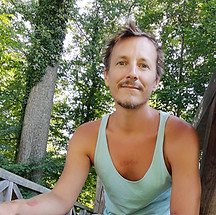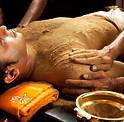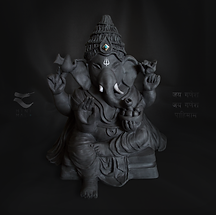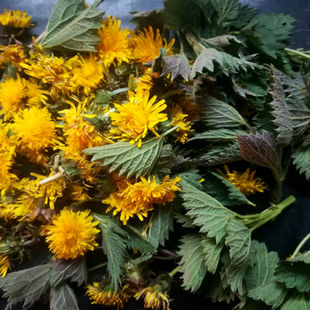No events at the moment
AYURVEDA
& ZH


Zoli Herczeg
Ayurveda masseur & Yoga instructor
" There is nothing else superior to Me. Everything is dependent on Me,
just as much as pearls strung on a thread rest on it."
- Bhagavad Gita 7.7
Ayurveda attaches great importance to preserving health and maintaining harmony. It offers opportunities for a long and quality life by different daily routines, proper nutrition, daily exercise, lifestyle, through meditation and yoga for the state of liberation.They use natural ingredients, 100% herbal oils, herbs, various minerals and herbal remedies to maintain health.
Vata dosha: air and eter - Vata is responsible for our energy and movements as well as for nerve impulses. Breath, speech, circulation and digestion are all the manifestation of Vata. The vata type is agile, skinny, fast acting, light, dry skin - especially in winter -, dislike cold weather, irregular appetite and digestion. Vata controls pitta and kapha. We experience people with a dominant of vata as enthusiastic, light and creative.
Kapha dosha: earth and water - Kapha unites properties such as heavy, slow, steady, but also soft, dense, tough and cold. In the body Kapha is responsible for solidality and all structures as well as for right amount of body fluids.
We all enjoy the lovable nature of kapha people and having them close to us can be a real pleasure. Nothing seems to get them out of balance. They always seems patient and understanding. The kapha is characterized by a powerful, heavy body, large, beautiful eyes, wellformed mouth, smooth porcelain skin, snow-white teeth, thick hair - often curly - and inner peace.
In 2012 I started looking for my true self, which required changes in my life.
I started with the thought of "You are what you eat". I changed my diet, I became vegetarian.
With this momentum I began to practice yoga. The spectacular physical and mental changes were noticable within a short time. Yoga had led me to the person who I really am. After four years of yoga practice I felt that I wanted to know more about eastern philosophy and science.
So I envolled in the Nita Yoga Academy in Budapest, where I could deepen my yoga knowledge and get aquainted the basis of Ayurveda. After a successful exam in 2017, I moved to Italy and completed an Ayurveda massage course at Ravichanda Ayurveda School in Ancona. Which brought me new plans and goals. I felt the time had come to visit the land of Yoga and Ayurveda, the magical India.
The city at the foot of Himalayas, on the banks of Ganges, the Yoga capital, Rishikesh was the target.
I found the best Ayurveda school in the city, The Bharat Heritage Services, where I learned from a highly trained Ayurveda and Tantra Yoga master, Vivek Bharat Gaur. I mastered the amazing method of Panchakarma therapy, various massage techniques, herbal oil treatments.
After a successful exam I spent more than a month in Rishikesh by the fabulous Ganges coast with full of spirituality to practice my knowledge that I gained in India, before returning home. At Hotel Grace Ganga I could practice what I learned from Vivek Bharat and I held massage workshops at Mustache Hostel.
In the meantime the world stoped during the pandemic situation I could not stop, I developed my knowledge. I did three online courses. I became an Ayurveda diet & lifestyle advisor and Yogic nutrition advisor, I did a meditation course to give my best for You. The next goal for my furute training is the wonderful state of Kerala, the Ayurveda world center in South India.
Namaste



ABHYANGA MASSAGE
SHIRODHARA MASSAGE
Hot herbal oil massage.
Massage with dosha-specific herbal oils.
By massaging the whole body, toxins are purified from the cells. The herbal oil nourishes body tissues and has a rejuvenating effect.
The oil penetrates deep into the skin, making it durable, supple and clean. Gives muscle tone, relaxes body and mind, harmonizes chakras / energy centers /, regenerates and rejuvenates the body and mind. It soothes the nervous system, strengthens the immune system, harmonizes the body's functioning.
Gentle massage for perfect relaxation.
After a full body massage the warm herbal oil is applied to the forehead /3rd eye/ while gentle Indian head massage helps to relax, the flow of energy dissolves the mental, physical and mental blocks caused by stress. It has a beneficial effect on the central nervous system. Excellent for the treatment of headache, migraine, depression, panic disorder, stress and anxiety.


SHIROABHYANGA MASSAGE
Head massage with warm oil.
Stimulates the head's marma points.
Gently massage for the head, face, neck and shoulders. Eliminates headaches, neck problems, relieves stress, conducives to restful sleep.
UDVARTANA POWDER MASSAGE
Massage with herbal powder.
Its purpose is to improve the condition of the body, its beneficial effects include the stimulation of lymphatic and blood circulation, strengthening of soft muscles. Removes toxins, tissues tightening, emollient, removes local fat pads.


BASTI
NASYA
Special treatment for pains in different areas
of the body /lower abdomen, upper back, head, abdomen, neck, knee, chest, hip/, which involves bathing the aching area in warm, herbal oil or decoction.
After the basic Ayurveda full body massage
we treat the aching area with specific herbals.
Ayurvedic detoxification treatment,
applying herbal oil to the nostril, and massaging it into the maxillary sinus . It improves the health of the senses and cleans the deposits in the sinuses, clears toxins from the head and neck, helps to eliminate headaches.


PANCHAKARMA
THERAPY
"Love is purity, love is innocence, love is wholeness, unity and heavenly happiness. Love fulfills."
- Maharishi Mukesh Yogi

Panchakarma /पंचकर्म/ is a Sanskrit word that means “five actions” or “five treatments”. This is a process used to clean the body of toxic materials left by disease, poor nutrition and environmental toxins. Normally the body has the innate ability to efficiently process and remove these waste materials, including the vitiated doshas. However, due to one’s repeated dietary indiscretions, poor exercise patterns, lifestyle, and genetic predisposition, the digestive enzymes, metabolic co-factors, hormones, and agnis which regulate the body’s internal homeostasis become disorganized. This can lead to the accumulation and spread of toxins throughout the physiology resulting in disease. This waste matter is called ama in Ayurveda. Ama is a foul-smelling, sticky, harmful substance that needs to be completely evacuated from the body. In conclusion, if the doshas become so imbalanced in the body that they produce endotoxins that accumulate in the microvessels, then these endotoxins must be removed from the body.
Panchakarma will remove the excess doshas and correct imbalances in them as well as eliminate the harmful ama out of your system through the body’s own organs and channels of elimination (colon, sweat glands, lungs, bladder, urinary tract, stomach, intestines, etc). Panchakarma purifies the tissues at a very deep level.
How do I know that my body has toxins?
The most common symptoms are: our tongue is flat, we have unpleasant smells of the body and mouth, we have constipation, we feel lazy and dull.
It is a very pleasurable experience that is tailored to individual needs, it is a complete rejuvenation, involving the following treatments:
Abhyanga // Hot herbal oil massage.
Sirodhara // Applying herbal oil to the forehead.
Udvarthanam // Dry deep massage using herbal powders.
Snehana // The use of herbal oils and medicinal oils internally and externally, which softens the body to displace unbalanced doshas.
Svedana // Sweating, which promotes dilation of pores in the skin, facilitating the removal of doshas. Sauna.
This is usually followed by snehana therapy.
Basti treatment for local problems and pain.
Nasya nasal cleansing treatment.
During the therapy consumption of appropriate dietary foods
The therapy includes practicing yoga asanas and mastering different breathing exercises.



YOGA
& MEDITATION
" Yoga is like music. The rhythm of the body, the melody of the mind, and the harmony of the soul creates the symphony of life."
- B.K.S. Iyengar
What is Yoga?
Yoga means union, union with God, union of the little, ego-self with the divine Self, the infinite Spirit.
Hatha Yoga is the physical branch of Raja Yoga, the true science of yoga. Raja Yoga is a system of meditation techniques that help to harmonize human consciousness with the divine consciousness.
Yoga is an art as well as a science. It is a science, because it offers practical methods for controlling body and mind, thereby making deep meditation possible.
The modern yogi B.K.S. Iyengar describes yoga in this way:
“Yoga is an art, a science and a philosophy. It touches the life of man at every level, physical, mental, and spiritual. It is a practical method for making one’s life purposeful, useful and noble.
As honey is sweet from any part of the honeycomb, so is yoga.
It enables every part of the human system to become attuned to its essence, the conscious seer within.
Yoga alone enables the practitioner to perceive and experience the world within and around himself, to touch the divine joy of all creation, and then to share that nectar of divine wealth and happiness with his fellow beings.”
Yoga works primarily with the energy in the body, through the science of pranayama, or energy-control. Prana means also ‘breath.’ Yoga teaches how, through breath-control, to still the mind and attain higher states of awareness.
In my Yoga therapy I combined Hatha Yoga with Ashtanga Yoga. Hatha Yoga is the base of all yoga types and the modern Ashtanga Yoga is a dinamic yoga style, asanas are connected with breath and movements. This allows us to practice yoga asanas effectively according to body type and the problems to be treated.
" A jóga olyan, mint a zene. A test ritmusa, az elme dallama és a lélek harmóniája hozza létre az élet szimfóniáját."
- B.K.S. Iyengar
Mi a Jóga?
A Jóga szó egyesülést jelent. Az Istennel való egyesülést, az ego-én egyesülését az isteni Énnel, a végtelen Szellemmel.
A Hatha jóga a Raja jóga fizikai ága, a jóga igazi tudománya. A Raja jóga egy meditációs technika rendszere, amely segít harmonizálni az emberi tudatot az isteni tudattal.
A jóga művészet és tudomány is. Egy tudomány, mert gyakorlati módszereket kínál a test és az elme kontrollálásához, ezáltal lehetővé téve a mély meditációt.
A modern yogi B.K.S. Iyengar így írja le a Jógát:
“A jóga művészet, tudomány és filozófia. Minden szinten érinti az ember életét, fizikálisan, mentélisan, és spirituálisan. Ez egy gyakorlati módszer az élet céltudatossá, hasznossá és nemessé tételéhez.
Mint ahogy a méz a méhsejt bármely részéből édes, úgy a jóga is.
Lehetővé teszi az emberi szervezet minden egyes részének, hogy összehangolódjon annak lényegével, a tudatos belső látnokkal.
A jóga önmagában lehetővé teszi a gyakorló számára, hogy felfogja és megtapasztalja a világot saját magában és körülötte , hogy megérintse minden teremtmény isteni örömét, és megossza az isteni bőség és boldogság nektárját embertársaival."
A Jóga elsősorban a testben lévő energiákkal dolgozik, a pranayama (légzés), az energia szabályozásának tudományán kersztül . Prana lélegzetet is jelent. Jóga megtanít arra, hogyan csillapítsuk az elménket a légzés kontrollálása által, elérve a magasabb tudatosság állapotát.
A Jóga terápiám során összekapcsoltam a Hatha Jógát az Ashtanga Jógával. Hatha Jóga az alapja minden mai jóga irányzatnak, és a modern Ashtanga Jóga egy dinamikus jóga stílus, az aszanák légzéssel és mozgással vannak összekötve. Ezáltal testípus és a kezelendő problémák szerint tudjuk hatékonyan gyakorolni a jóga ászanákat.



What is Mantra?
The word mantra can be broken down into two parts: “man,” which means mind, and “tra,” which means transport or vehicle. In other words, a mantra is an instrument of the mind - a powerful sound or vibration that you can use to enter a deep state of meditation.
Like a seed planted with the intention of blossoming into a beautiful perennial, a mantra can be thought of as a seed for energizing an intention. Much in the same way you plant a flower seed, you plant mantras in the fertile soil of practice. You nurture them and over time they bear the fruit of your intention.
- Dhanvantari Mantra
ॐ नमो भगवते वासुदेवाय धन्वन्त्रये ।अमृतकलश हस्ताय सर्वामय विनाशनाय त्रैलोक्यनाथाय श्री महाविष्णवे नमः ॥
Om Namo Bhagavate Vasudevaaya Dhanvantaraye |
Amrita-kalasha Hastaya Sarvamaya Vinashanaya
Trailokyanathaya Sri Mahavishnave Namaha ||
Lord Dhanvantari is the God of Medicine (Ayurveda). Lord Dhanvantari is believed to have appeared during the churning of the ocean by Devas and Asuras, when he emerged from ocean holding a pot of 'Amrit', the life giving elixir. The day of his appearance is celebrated on Dhanteras, a few days before Diwali.
- Vishnu Gayatri Mantra
ॐ नारायणाय विद्महे वासुदेवाय धीमहि ।
तन्नो विष्णु: प्रचोदयात् ॥
Om Narayanaya Vidmahe Vasudevaya Dhimahi |
Tanno Vishnuh Prachodayaat ||
By reciting Vishnu Gayatri Mantra one becomes intelligent.
Regular chanting of Vishnu Gayatri mantra gives peace of mind and keeps away all the evil from our life and makes us healthy, wealthy and prosperous.
- Shreeman Narayanaa
श्रीमन नारायण नारायण हरी हरी ।
हरी ॐ नमो नारायण ॥
Shreeman Narayana Hari Hari |
Hari Om Namo Narayana ||
Om Namo Narayana is a salutation to the god Vishnu.
Shreeman Narayana, I surrender to your lotus feet.
- Lakshmi Mantra
ॐ महालक्ष्मी नमो नमः ।
ॐ विष्णुप्रियाये नमो नमः ।
ॐ धन प्रदाय नमो नमः ।
ॐ विश्व जन्नान्य नमो नमः ॥
Om Maha Laxmi Namo Namah |
Om Vishnu Prayayi Namo Namah |
Om Dhan Pradaya Namo Namah |
Om Vishawa Jannanya Namo Namah ||
Laxmi Mantra has chant of Lord Laxmi which is “Om Mahalaxmi Namo Namah”. Those who worship Laxmi, tend to perform the best in their Karma to gain health, wealth and success in Life. She blesses all who share part of their knowledge, wisdom and material with those in need. She gives an opportunity to lift one from life of poverty to richness.
- Jai Lakshmi Mata
ॐ जय लक्ष्मी माता ।
मैया जय लक्ष्मी मात ॥
...
Om Jai Lakshmi Mata |
Maiya Jai Lakshmi Mata ||
...
"Glory to you, O Mother, glory to you, mother Lakshmi."
Lakshmi Aarti is a spiritual song sung in praise of Goddess Lakshmi who is one of the many avatars of Goddess Ambe - a Hindu Deity. Devotees chant this Aarti to please the Goddess who bestows them with her blessings. It is said that chanting this Aarti brings prosperity and wealth. According to an age old tradition people light oil lamps outside their houses, during Diwali (Indian festival of lights), to invite the goddess to their homes and bless them with love and prosperity. Aarti is a Hindu religious ritual of worship, a part of puja, in which light from wicks soaked in ghee (purified butter) or camphor is offered to one or more deities. Aartis also refer to the songs sung in praise of the deity, when lamps are being offered.
- Maha Mantra
हरे कृष्ण हरे कृष्ण । कृष्ण कृष्ण हरे हरे । हरे राम हरे राम । राम राम हरे हरे ॥
Hare Krishna, Hare Krishna Krishna, Krishna, Hare, Hare |
Hare Rama, Hare Rama Rama, Rama, Hare, Hare ||
Chanting Hare Krishna mantra is a spiritual call for the Lord and His energy, to give protection to the conditioned soul.
Hare is a word used for addressing the Energy of the God. So Hare Krishna means addressing Energy of God Krishna and Hare Rama means addressing Energy of God Rama
Jaya Ganesha Jaya Ganesha Pahimam |
Jaya Ganesha Jaya Ganesha Rakshamam ||
"I bow to Lord Ganesha - The One who removes all obstacles I bow to Lord Ganesha - The one who protects me from the negativity."
Jaya Deva Jaya Deva |
Jaya Mangala Murti ||
...
"Hail the god, Hail the god, Hail the auspicious idol."
Om Namah Shivaya Om Namah Shivaya |
Hare Hare Bhole Namah Shivaya ||
...
"Salutations to Lord Shiva,who is also called Hare. Salutations to Lord Hare, the destroyer."
- Shiva Bhajan / शिव भजन
Bhajan is a Sanskrit word meaning “singing to glorify God." It is also the name of a Hindu genre of devotional songs and hymns.
Bhajans are typically lyrical and convey love for the Divine. It can also refer to the inner music of the soul that yogis hear on their journey to oneness with the divine or higher Self.
This bhajan is to glorify Shiva.






























